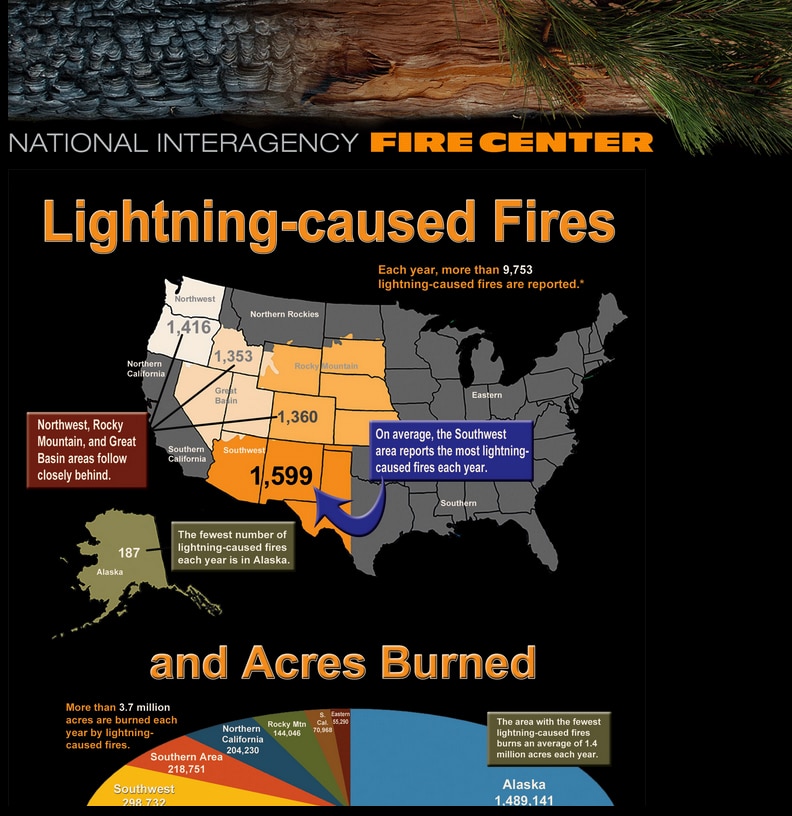
Chart provided by Santa Fe National Forest. Courtesy/SFNF
SFNF News:
It was a busy weekend for dispatchers and firefighters on the Santa Fe National Forest (SFNF) with the onset of the southwestern monsoon season and the accompanying lightning strikes.
The Santa Fe Dispatch Center confirmed 12 active lightning starts on the SFNF since Friday with an additional two possible starts under investigation.
With the annual advent of the monsoonal weather pattern, the welcome moisture that helps reduce the risk of wildfire also is accompanied by lightning, which paradoxically causes almost 1,600 wildfires annually in the southwestern United States, according to the National Interagency Fire Center (NIFC).
This year, wildfire management is complicated by COVID-19, which has placed additional risk management protocols on the Forest Service and other land management agencies. In 2020, the strategy for most wildfires is full suppression to protect people, property and communities while limiting firefighter exposure to the novel coronavirus.
The good news is that the SFNF has the firefighters and other resources it needs to manage the lightning-caused starts. But during this monsoon season, it’s even more important to prevent human-caused wildfires to protect firefighters from unnecessary exposure and risk due to COVID-19.
According to NIFC, the southwestern United States averages almost 3,700 human-caused wildfires annually, more than twice the average number of lightning-caused wildfires.
Wildfire isn’t the only danger posed by monsoonal weather patterns. Forest visitors are urged to check the weather forecast before leaving home for extended periods of time outdoors. According to the National Weather Service (NWS), two-thirds of lightning deaths take place during leisure or recreational activities, with fishing at the top of the list. For detailed information and safety tips, take a look at the NWS’ Lightning Safety website before hiking, biking, fishing or camping on the SFNF.
Other risks associated with monsoons include flash flooding and damaging winds. Even 6 inches of fast-moving flood waters can be fatal, especially for children. Never drive into a flooded roadway, and don’t camp overnight or park along streams and washes during the monsoon.
If you find yourself in proximity to a flash flood, get to higher ground as quickly as possible. Wind gusts associated with southwestern thunderstorms can exceed 100 mph. The majority of deaths and injuries during severe thunderstorms are caused by falling trees or downed power lines. For additional safety information, see the NWS’ Monsoon Safety page.
“Our first priority is always the safety of our employees, our visiting public and our communities,” Acting Forest Supervisor Debbie Cress said. “In dry climates like ours, we’re always happy to see the monsoons arrive, but we can’t lose sight of the dangers that come with the rains. It’s especially important this time of year to ‘Know Before You Go,’ be prepared for all possibilities, and – most importantly – make it home safely at the end of the day.”

